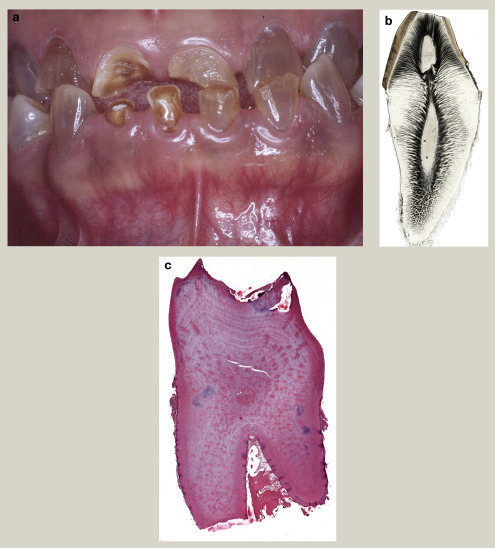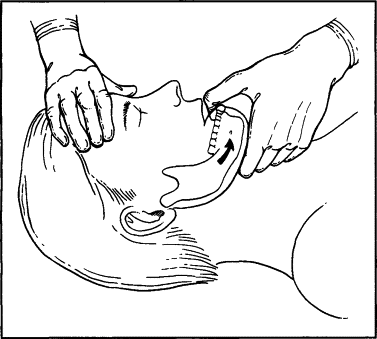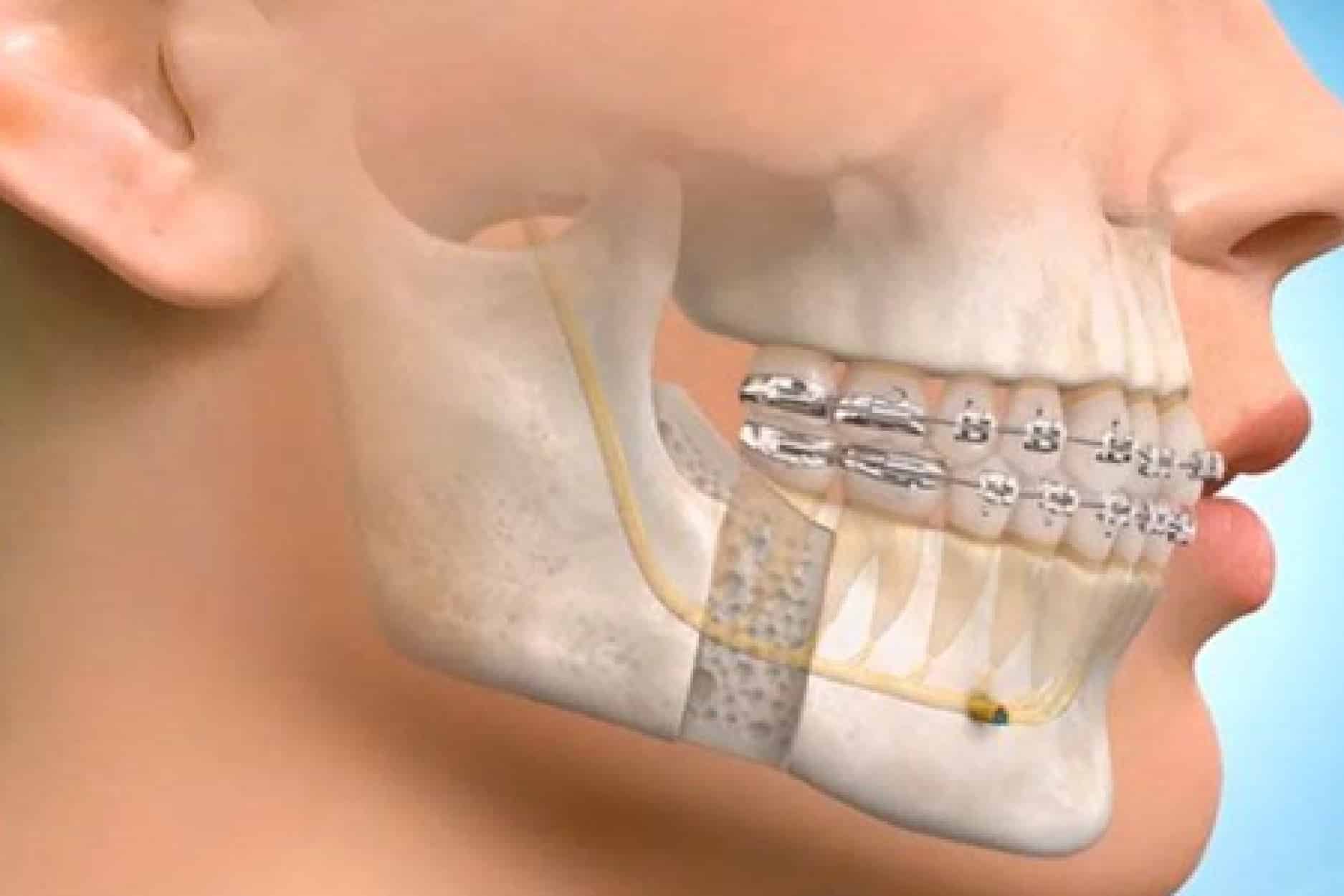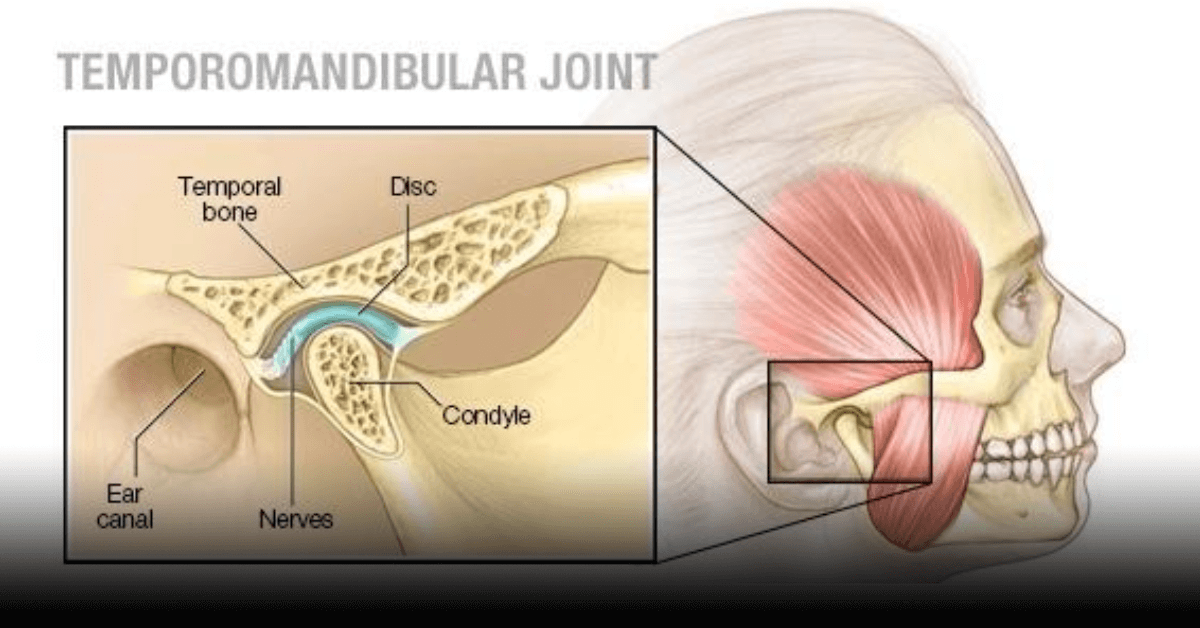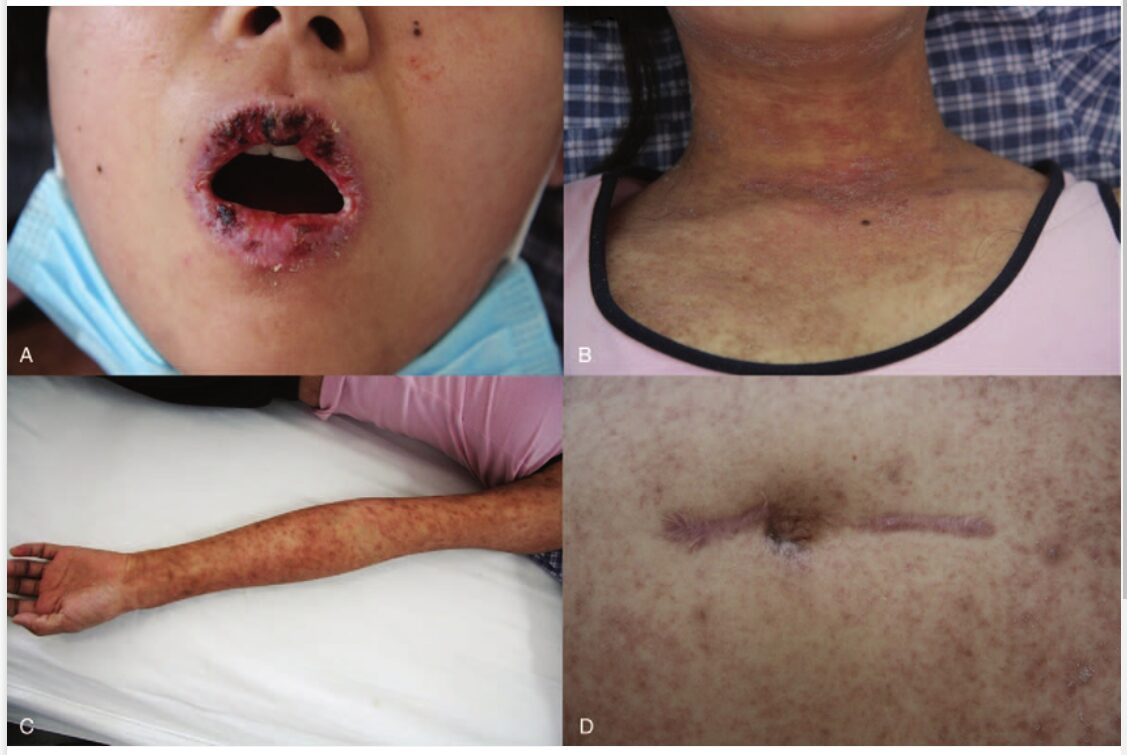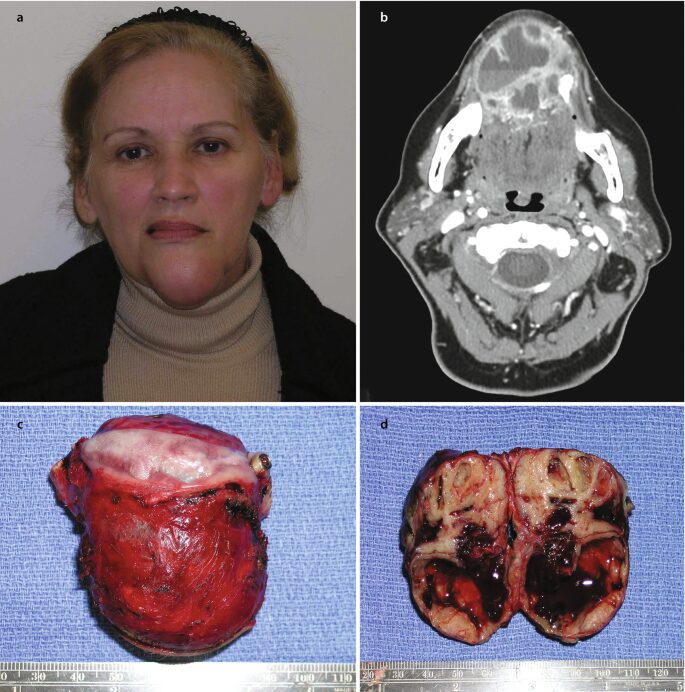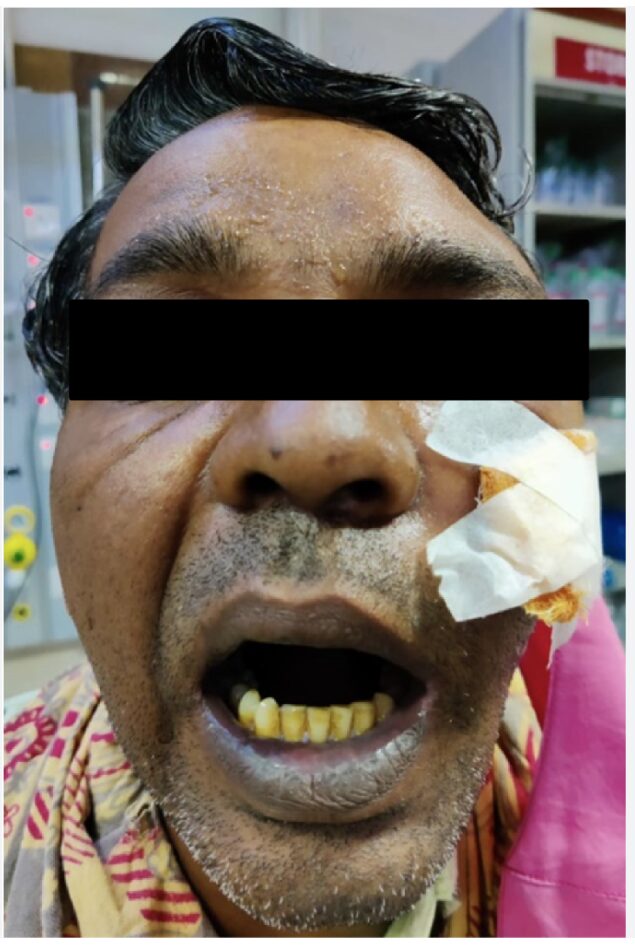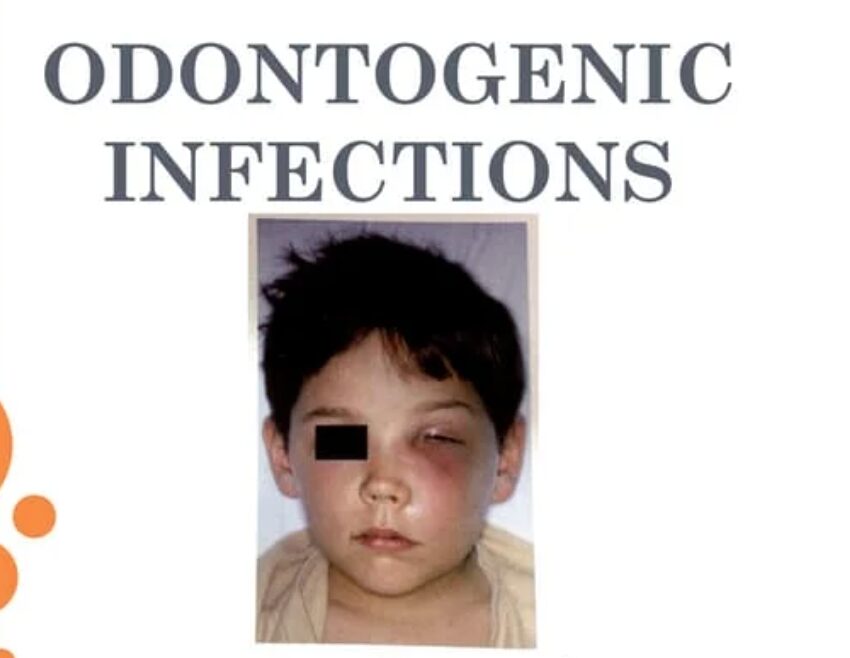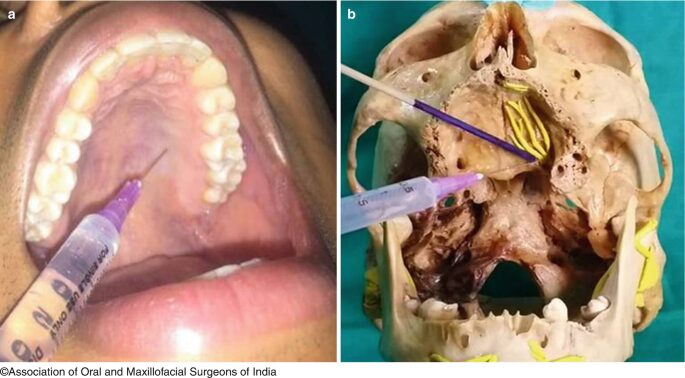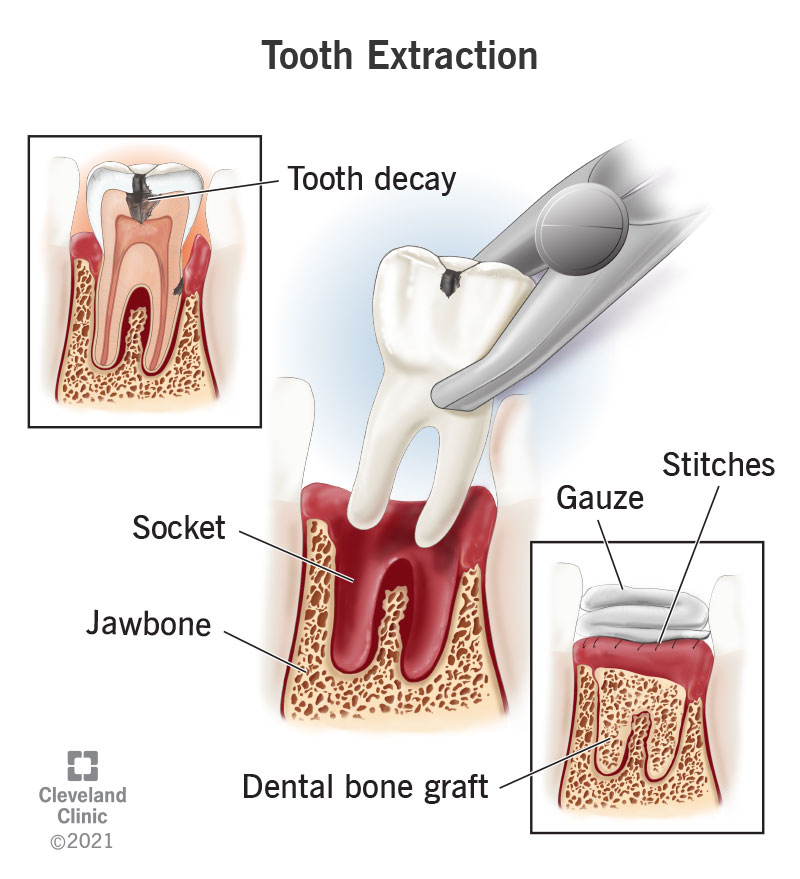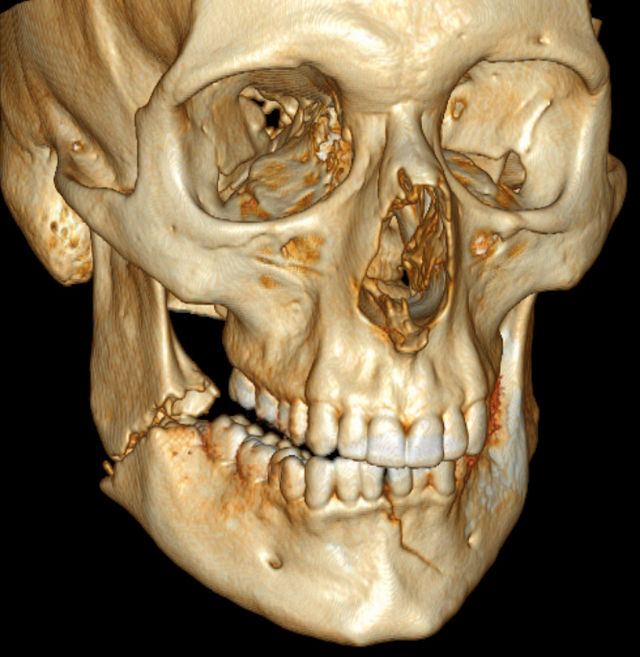In this Post you will be able to take quiz containing important MCQs of Oral and Maxillofacial Surgery and topic covered in this Quiz will be Benign & Malignant Tumors in Oral and Maxillofacial Surgery. Correct Answers are Marked in Bold and Blue colour.
Benign and Malignant Tumors of Oral Cavity Multiple Choice Questions
- Tumor represented T2 N2 M0 is classified as:
A. Stage I
B. Stage II
C. Stage III
D. Stage IV - Sturge Weber syndrome is characterized by all EXCEPT:
A. Exophytic oral Hemangioma
B. Facial hematoma
C. Tramline calcification of dura on lateral cephalogram
D. Facial hemangioma - Keratocanthoma is found most commonly on ?
A. Lip
B. Gingiva
C. Tongue
D. Hard palate - Clear cells are seen in:
A. Chondrosarcoma
B. Osteosarcoma
C. Fibrosarcoma
D. Ewing’s sarcoma - Neoplastic transformation in leukoplakia is seen most commonly in:
A. Buccal mucosa
B. Floor of mouth
C. Lateral border of tongue
D. Palate - Plasma cell tumour of bones with B-lymphocytic origin is:
A. Plasmacytoma
B. Multiple myeloma
C. Burkitt’s lymphoma
D. None of the above
E. Both A & B - The following lesion is a doubtful premalignant lesion for oral malignancy:
A. Leukoplakia
B. Chronic hyperplastic candidiasis
C. Erythroplakia - Definitive diagnosis of oral cancer is made by:
A. Complete radiographic survey
B. Biopsy
C. Exfoliative cytology
D. Pantograph - Diffuse erythema (pinpoint petechiae) and white patches in smoker’s palate occur due to:
A. Complete obstruction to minor salivary gland orifices
B. Keratinization with partially occluded minor salivary glands
C. Diffuse parakeratinization of the palate
D. Excessive orthokeratinization of the palate - Histochemical demonstration of glycogen in the cells can help in the diagnosis of:
A. Malignant melanoma
B. Squamous cell carcinoma
C. Kaposi’s sarcoma
D. Ewing’s sarcoma - On biopsy report of CGCG on the basis of histologically & morphological similarities differential diagnosis is made between:
A. Fibrous dysplasia
B. Hyperparathyroidism
C. Osteitis deformans
D. Hyperthyroidism - Firbroma combined with glandular tissue is:
A. Neurofibroma
B. Fibroadenoma
C. Fibrolipoma
D. Fibromyoma - Which of the following is false about ossifying fibroma ?
A. Affects people in 3-4 decade of life
B. Maxilla affected more than the mandible
C. Circumscribed radio opacity
D. Continuous growth - Treatment for verrucous carcinoma is:
A. Surgery + radiotherapy
B. Excision
C. Laser technique
D. Alpha (a) interferon - Which of the following is not a type of leukoplakia:
A. Ulcerative
B. Bullous
C. Speckled
D. Homogenous - Benign tumor which shows metastasis:
A. Warthin’s tumor
B. Ameloblastoma
C. Keratocanthoma
D. Neurofibroma - Lateral skull view of palatal tori is used to know:
A. Extent
B. Pneumatization
C. Bone pattern
D. Location - Presence of Epstein Barr virus in hairy leukoplakia can be demonstrated using following methods EXCEPT:
A. Tzanck smear
B. Polymerase chain reaction
C. In situ hybridization
D. Electron microscopy - Hairy leukoplakia is associated with all of the following EXCEPT:
A. Filiform to flat patch on lateral tongue
B. Bilateral appearance
C. Epstein Barr virus
D. AIDS - Oral ulceration resembling Apthae are encountered in:
A. Gluten enteropathy
B. Chronic smokers
C. Excess of B-complex
D. Anti-malarial medication - Brachytherapy means:
A. Chemotherapy
B. Radiation administered interstially through catheters
C. Lasers
D. Radiation involving normal tissues - Commonest site of carcinoma of tongue:
A. Posterior one third
B. Ventral surface
C. Tip of tongue
D. Lateral margin - A patient with carcinoma cheek has tumor of 2.5 cms located close to and involving the lower alveolus. A single mobile homolateral node measuring node measuring 6 cm is palpable. Based on these clinical findings TNM stage of the tumor is:
A. T1 N1 Mo
B. T2 N2 Mo
C. T3 N1 Mo
D. T4 N2 Mo - Tumors metastatic to the jaw bones are most likely to be found in the:
A. Mandibular condyle
B. Posterior moral region
C. Anterior maxilla
D. Maxillary tuberosity - Which of the following is an oral precancer:
A. Oral hairy leukoplakia
B. White spongy naevus
C. Leukemia
D. Speckled Leukoplakia - White, spongy, folded thick mucosa is seen in:
A. Oral hairy leukoplakia
B. Aspirin burn
C. White spongy nevus
D. Pseudomembranous Candidiasis - The condition involved with an unerupted tooth or impacted tooth is:
A. Dentigerous cyst
B. Mural ameloblastoma
C. Adenomatoid odontogenic tumor
D. All of the above - Ossifying fibroma manifests as:
A. Unilocular radiolucency
B. Unilocular radio opacity
C. Multilocular radiolucency
D. Multiocular radio opacity
E. Both A & B - Which of the following conditions is least likely to present as an eccentric osteolytic lesion:
A. Aneurysmal bone cyst
B. Giant cell tumour
C. Fibrous cortical defect
D. Simple bone cyst - Pripheral giant cell granuloma occurs most commonly on the:
A. Gingiva
B. Alveolar ridge
C. Palate
D. Floor of the mouth - The most common bone tumor that occurs in children is:
A. Osteosarcoma
B. Ewing’s sarcoma
C. Metastatic carcinoma
D. Multiple myeloma - Hamartoma is:
A. Neoplastic
B. Non-neoplastic
C. Afflicted by trauma
D. Hormonal distubance - The tissue of which lesion has been described as resembling a blood sponge with large pores:
A. Cavernous hemangioma
B. Capillary hemangioma
C. Aneurysmal bone cyst
D. Eruption hematoma - Arecanut chewing is aetiological factor in:
A. Leukoedema
B. Oral dubmucous fibrosis
C. Erythema multiforme
D. Oral lichen planus - Mobility of teeth in carcinoma of Maxillary sinus is due to involvement by tumor of:
A. Anterior wall of the sinus
B. Posterior wall of the sinus
C. Roof of the sinus
D. Floor of the sinus - In which one of the following perineural invasion in head and neck cancer is most commonly seen ?
A. Adenocarcinoma
B. Adenoid cystic carcinoma
C. Basal cell adenoma
D. Squamous cell carcinoma - All of the following malignancies metastasize except?
A. Basal cell carcinoma
B. Adenocarcinoma
C. Squamous cell carcinoma
D. Melanoma - Small palpable mass elevated above the epithelial surface is?
A. Papule
B. Macule
C. Plaque
D. Vesicle - Multiple punched out lesion are seen in?
A. Paget’s dissease
B. Osteosarcoma
C. Ewing sarcoma
D. Multiple myeloma - Teratoma is best described as:
A. Namartous developmental manifestation consisting of three different layers
B. Occurs most commonly in stomach and lungs
C. Originates from mesodermal tissue
D. Associated with very painful condition - Onion Skin appearance of radiographs is seen in:
A. fibrous dysplasia
B. osteosarcoma
C. Ewing’s sarcoma
D. Chondrosarcoma - Which of the following is benign in nature:
A. Lymphoma
B. lymphangioma
C. Melanoma
D. Leukemia - On clinical examination a 60 years old female had a tumor in the right buccal mucosa. The size of the tumor was about 2 cm in diameter. There was no involvement of regional lymph nodes and also had no distant metastasis The TNM stage of the tumor is:
A. T1 No Mo
B. T1 NI Mo
C. T1 N2 Mo
D. T2 No Mo - Tobacco usage has been associated with:
A. Hyperkeratosis
B. Erythema
C. Ulceration
D. None of the above - Acanthosis is:
A. Increase in mitotic division
B. Increase in thickness of superficial layer
C. Increase in thickness of spinous layer
D. Disruption of basal lamina - Melanoma is:
A. Benign tumour of skin and mucous membrane
B. Malignant tumour of skin and mucous membrane
C. Malignant tumour of melanophores
D. Benign tumor of melanophores - Tumour that doesn’t show spontaneous regression:
A. Neuroblastoma
B. Retinoblastoma
C. Malignant melanoma
D. Octeosarcoma - Swelling and redness of the orifices of minor salivary glands of the palate occurs in:
A. Nicotinic stomatitis
B. Leukoplakia
C. Fovea Palatine
D. Erythroplakia - A patient complains of numbness of lower lip. There is no history of tooth extraction. It could be:
A. Infection
B. Metastatic neoplasia
C. Dental Manipulation
D. CNS disease - Carcinoma of the cheek:
A. CHaracteristically is columner-celled:
B. Has a recognized association with chewing gum
C. Has a recognized association with chewing betel nut
D. Has a recognized association with geographic tongue - Best results are obtained in oral submucous fibrosis is by:
A. Intralesional cortisone therapy. with hyaluronic acid
B. Oral cortisone with intralesional therapy (cortisone)
C. Vitamin E and oral cortisone
D. Intralesional placental extract - Presence of epithelial Pearls in spinous layer of epithelium is characteristic of:
A. Carcinoma
B. Pre-cancer
C. Dysplasia
D. Metaplasia - Most common route for metastasis of oral cancer is by:
A. Direct textension
B. Lymphatics
C. Blood vessels
D. Aspiration of tumor cells - Etiology of multiple neurofibromatosis is:
A. Genetic
B. Viral
C. Injury
D. Endocrine - A man who had suffered from displaced fracture of mandible complains of pain in-old fracture site near mental foramen. There is a movable tender mass on palpation in the area The best preoperative diagnosis is:
A. Neuroleiomyoma
B. Neurofibroma
C. Trigeminal neuralgia
D. Traumatic neuroma - Hodgkin’s disease is considered to be:
A. Follilcular reticulosis
B. Inflammatory disease
C. Chronic granulomatous disease
D. A malignant neoplasm - White rough pedunculated lesion on palate is most likely:
A. Pleomorphic adenoma
B. Papilloma
C. Nevus
D. Fibroma - Which of the following is a reactive lesion of the gingiva that may demonstrate bone radiographically and often even microscopically:
A. Osteoma
B. Peripheral ossifying fibroma
C. Traumatic neuroma
D. Irritation fibroma - The most common bone cancer is:
A. Osteosarcoma
B. Metastatic bone cancer
C. Multiple myeloma
D. Squamous cell carcinoma - Persons with the greatest risk of oral cancer:
A. Have a poor oro-dental hygiene, nutritional deficiencies and are chronic alcoholics
B. Are middle aged have a poor oro-dental hygiene and regularly use tabacco
C. Are old, chronic alcoholics and regularly and regularly use tobacco
D. Are young, have poor oro-dental hygiene and are heavy smokers - Steriform pattern of fibrous tissue is seen in:
A. Fibrosarcoma
B. Malingant fibrous histiocytoma
C. Nerufibroma
D. Ameloblastic fibroma - A 3 cm squamous cell carcinoma of the retromolar trigone and invading the mandible and the medial pterygold muscle is at what TNM stage:
A. Stage I
B. Stage II
C. Stage III
D. Stage IV - Papillomatous tongue is observed in:
A. Lymphangioma
B. Hyalinia cutus et mucosa syndrome
C. Fetal face syndrome
D. Tuberous scterosis - Metastases from carcinoma of tongue by blood stream is more likely when the carcinoma involves the:
A. anterior third
B. middle third
C. posterior third
D. lateral margin - Features characteristic of leukoplakia include all except:
A. Hyperkeratosis
B. Plasma cell infiltration within the dermal papilae
C. Clinically, a paint like patch
D. A moist shiny lesion - Leukoplakia with the worst prognosis is seen on the:
A. Dorsum of tongue
B. Floor of mouth
C. Buccal mucosa
D. Palate - In which of the following type of tumour the HPV-6 can be detected ?
A. Papilloma
B. CEOT
C. Sarcoma
D. Pyogenic Granuloma - Which of the following epithelial changes commonly signify precancerous condition:
A. Dyskeratosis
B. Hyperkeratosis
C. Parakeratosis
D. Acanthosis - Which of the following is not a feature of torus mandibularis:
A. Common in Mongoloids
B. Present on the lingual surface of mandible below the mylohyoid line
C. Usually Bilateral
D. May or may not associated with torus palatinus - Which of the following does not have a viral etiology:
A. Burkitt’s lymphoma
B. Nasopharyngeal carcinoma
C. Hodgkin’s lymphoma
D. Hepatocellular carcinoma - Kaposi’s sarcoma is a tumour of:
A. Blood vessels
B. Reticuloendothelial system
C. Striated muscles
D. Smooth muscles - Which of the following is most likely to be fatal:
A. Osteochondroma
B. Giant cell tumour
C. Paget’s disease
D. Multiple myeloma - The most common malignancy of the oral cavity is:
A. Basal cell carcinoma
B. Transitional cell carcinoma
C. Melanoma
D. Squamous cell carcinoma - Which of the following conditions is characterized by cafe-au-lait spots, non-encapsulation and potential for malignant transformation:
A. Neurilemmoma
B. Neurofibroma
C. Traumatic Neuroma
D. Solitary plasmocytoma - Which of the following is NOT true of sturge Weber syndrome:
A. Hemangiomatous involvement of skin
B. Mostly bilateral
C. Port wine nevus
D. Vascular gingival hyperplasia - Hemosiderin pricticles are seen histologically in case of:
A. Fibroma
B. Pregancy tumor
C. Peripheral giant cell granuloma
D. Papilloma - Which of the following viruses are not implicated in human malignancies:
A. Epstein-Barr virus
B. Herpes simplex virus type I
C. HTLV 1
D. Papilloma virus - Which of the following has been implicated due to sunlight:
A. Basal cell carcinoma
B. Lymphoepithelioma
C. Junctional nevus
D. Verruca vulgaris - During oral examination of a 57-year old man a large keratotic patch that covers the entire palate is noted some Red Spots are also seen in the patch The patient most likely is a:
A. Pipe smoker
B. Cigar smoker
C. Snuff chewer
D. Tobacco chewer - Satellite lesion with locally invasive property is seen in:
A. Chronic hypertrophic candidiasis
B. leukoplakia
C. dental ulcers
D. Hemangioma - On stretching the cheek the lesion disappears in:
A. Leukoplakia
B. Focal hyperkeratosis
C. Leukoedema
D. Typhoid - Abtropfing affect is seen in:
A. Junctional nevus
B. Pemphigus
C. Apthous ulcer
D. Erythema multiformae - Bowen’s disease is:
A. Benign neoplasm of the G.I.T
B. Intro epithelial carcinoma
C. Vesiculobullous lesion of skins
D. Ulcerative lesion of G.I.T - Warty or Cauliflower like growth is:
A. Papilloma
B. fibroma
C. Lipoma
D. Torus - Bence- Jones are laboratory finding of:
A. paget’s disease
B. Multiple myeloma
C. Malignant melanoma
D. Fibrous dysplasia - Which of the following is a true cyst:
A. Aneurysmal bone cyst
B. Gingival cyst of the newborn
C. Haemorrhagic bone cyt
D. All of the above - A rhabdomyoma is a tumour origination from:
A. Never tissue
B. Smooth muscle
C. Striated muscle
D. Vascular endothelium - Which of the is the most common site for the occurrence of a basal cell carcinoma:
A. Buccal mucosa
B. Hard Palate
C. Skin of the lower lip
D. Dorsum of the tongue - An Inflammed capillary hemangioma of the oral cavity looks similar to a:
A. Nevus
B. Neurofibroma
C. Pyogenic granuloma
D. Angiosarcoma - Numbness of lip seen with no previous dental treatment:
A. Meta static carcinoma
B. Central nervous system lesion
C. Osteomyelitis
D. Infection - In which of the following conditions pulsations or murmur may be detected:
A. Capillary hemangioma
B. Osteogenic sarcoma
C. Epidermoid carcinoma
D. Osteoid osteoma - Which of the following statement is true:
A. Kaposi sarcoma is a benign tumour
B. Kaposi sarcoma is found in HIV positive subjects
C. Kaposi sarcoma is malignant fast growing tumour
D. Kaposi sarcoma is an ectodermal derivative - Hemosiderin pricticles are seen histologically in case of:
A. Fibroma
B. Pregancy tumor
C. Peripheral giant cell granuloma
D. Papilloma - Phleboliths are seen in:
A. Dental pulp
B. Salivary Gland duct
C. Cavernous Hemangiomas
D. Subepithelial Bulla - White-lesion with definite precancerous potential:
A. Leukoplakia
B. Discoid lupus Erythematosus
C. Lichen Planus
D. All of the above - Squamous papilloma is induced by:
A. EBV
B. HSV
C. HPV
D. CMV - Which of the following statements is true for MEN type:
A. There is hyperplasia of parathyroid gland
B. Chromophobe adenoma of pituitary gland may result in acromegaly
C. Pancreatic tumours may produce gastrin, insulin glucagon, samatostain
D. All of the above - Benign tumour of voluntary muscle:
A. Leiomyoma
B. Rhabdomyoma
C. Rhabdomyosarcoma
D. Leiomyosarcoma - Port wine stain in characteristic feature of:
A. Peutz Jegers Syndrome
B. Sturge Weber Syndrome
C. Albright’s Syndrome
D. Lymphangioma - The most common benign tumor occurring in oral cavity is:
A. Papilloma
B. Fibroma
C. Adenoma
D. Epulis - Kaposi’s sarcoma is more commonly seen in patient with:
A. AIDS
B. Amyloidosis
C. Leukemia\
D. HSV infection - Antoni type A and type B are seen in:
A. Neurofibroma
B. Neurilemmoma
C. Neurofibrosarcoma
D. Traumatic neuroma - Among pre-malignant oral lesions:
A. Leukoplakia should be proved by biopsy
B. Leukoplakia does not disappear even after cessation of smoking
C. Erythroplakia has a higher risk for malignancy than leukoplakia
D. Oral submucous fibrosis is seen in all parts of the world - A lesion composed of microscopic vessels is called as:
A. Haemangioma
B. Angioma
C. None of Haemangioma and Angioma
D. Heamangioma and Angioma - Which of the following is the diagnostic characteristic of peripheral giant cell granuloma?
A. Mass of granulation tissue
B. Multinuclear giant cells
C. Keliod like enlargement
D. Epithelium is atrophic in some areas - In TNM classification T3 stands for tumour size:
A. >2 cm
B. >4 cm
C. 4 cm with invasion of adjacent structure - What could be the most appropriate provisional diagnosis for multiple nodular exophytic reddish lesions of oral mucosa in an AIDS patient ?
A. Hemangioma
B. Focal epithelial hyperplasia
C. Acute pseudo-membranous candidiasis
D. Kaposi’s sarcoma - Leiomyoma is a tumor of:
A. Cerebral tissue
B. smooth muscle
C. striated muscle
D. cardiac muscle - Which of the following is a pseudo cyst:
A. Mucous retention cyst
B. Radicular cyst
C. Aneurysmal bone cyst
D. Dentigetous cyst - Metastatic disease to the oral region is most likely to occur in which of these locations:
A. Tongue
B. Posterior maxilla
C. Posterior mandible
D. Floor of the mouth - An epithelial lining is typically found in all of the following except:
A. Sinuses
B. Fistulae
C. Aneurismal bone cysts
D. Keratocytes - Cancer which most commonly metastasizes to jaw bone is:
A. Breast
B. Prostatic
C. Lung
D. Kidney - Osteosarcoma of the jaw:
A. Occurs mostly in the maxilla
B. Seen in old age
C. Highly malignant tumour which shows early metastasis
D. Shows a soap bubble type of radiolucency in radiographs - The most common malignant tumor of the gingiva is:
A. Malignant
B. Sarcoma
C. Fibro-sarcoma
D. squamous cell carcinoma - The most common site of metastasis from the mandibular sarcoma is:
A. Lung
B. Liver
C. Spleen
D. Heart - All of the following are precancerous conditions except:
A. SLE
B. Peutz-Jeghers syndrome
C. Plummer-vinson syndrome
D. Xeroderma pigmentosum - Oral submucous fibrosis is diagnosed by:
A. Juxta, epithelial fibrosis (changes)
B. Changes in epithelium
C. Changes in submucosa
D. All of the above - Presence of Verocay bodies and having predeliction for occurrence in the tongue are seen in:
A. Granular cell myoblastoma
B. Neurilemmoma
C. Neurofibroma
D. Metaplasia - Which of the following is most malignant?
A. Neurolemmoma
B. Neurofibroma
C. Neurogenic fibroma
D. Traumatic neuroma - Which on of the following is a connective tissue tumour?
A. Lipoma
B. Melanoma
C. Carcinoma
D. Papilloma - Which of the following is carcinoma of the skin spreads by local invasion and has no tendency to metastasise?
A. Malignant melanoma
B. Basal cell carcinoma
C. Fibrosarcoma
D. Leukoplakia - Ressell’s bodies are found in:
A. Activated macrophages
B. Histiocytes
C. Plasma cells
D. Erythrocytes - Sunlight is one of the etiological causes of:
A. Squamous cell carcinoma
B. Malignant melanoma
C. Basal cell arinoma
D. Port-wine stain - Which among the following shows pesudo-epitheliometous hyperplasia:
A. sq. cell carcinoma
B. Basal cell arcinoma
C. Verrucous carcinoma
D. Granular cell myoblastoma - Increased incidence of carcinoma is observed with:
A. Homogenous leukoplakia
B. Verrucous leukoplakia
C. Nodular leukoplakia
D. Ameloblastic fibroma - Asymmetric widening of the periodontal ligament around two or more teeth is seen in:
A. metastatic breast carcinoma
B. osteosarcoma
C. paget’s disease
D. Fibrous dysplasia - Commonly involved lymph nodes during metastasis from carcinomas of oral cavity is:
A. Jugulo omohyoid and jugulo digastric
B. sub mandibular and servical lymph nodes
C. submental and submandibular lymphnodes
D. None of the above - Most common site of oral leukoplakia is:
A. angle of mouth
B. cheek mucosa
C. Soft palate
D. Gingiva - A patient is diagnosed of oral cancer or stage T,N,M:
A. Surgery
B. Surgery +radiotherapy
C. Chemotherapy alone
D. Surgery+ chemotherapy - Osteosarcoma presents a radiographic picture resembling:
A. Sun-brust appearance
B. Cotton-wool appearance
C. Soap-bubble appearance
D. Ground-glass appearance - A 20yr old patient reports with multiple swelling of the jaws. Clinical examination reveals multiple hard swellings involving the jaws and intra orally several missing teeth are noticed. Panoramic radiograph reveals multiple radio opaque lesions in the maxilla and the mandible with multiple impacted teeth and supernumerary teeth indicative of Gardeners syndrome: The above mentioned condition is:
A. Autosomal dominant disease
B. Autosomal recessive disorder
C. X-linked disease
D. A syndrome of unknown cause - Hemangiopericytoma resembles:
A. Hemangioma
B. Glomous tumour
C. Ewings tumour
D. Plasmacytoma - Brachytherapy is:
A. Irradiation of tissues from a distance
B. Irradiation of tissues from a distance of 3 cm
C. Irradiation of tissues by implants within the tissues
D. Irradiation of tissues by radiopharmaceuticals - Sarcoma of the soft tissues spread by:
A. Blood vessels
B. Lymphatics
C. Direct invasion
D. Local infiltration - Squamous cell carcinoma with best prognosis is:
A. Lip
B. Tongue
C. Palate
D. Floor of the mouth - Acanthosis with intraepithelial vacuolation and hyperparakeratosis is seen in:
A. Hairy tongue (lingua villosa)
B. Hyperplastic candidiasis
C. Speckled leukoplakia
D. Desquamative gingivitis - The sign or symptom most suggestive of metastatic disease is:
A. Paraesthesia
B. Sudden swelling
C. Root resorption
D. Diffuse radiolucency - The oral mucosa becomes rigid, blanched and opaque in which of the following conditions:
A. Pemphigus vulgaris
B. Lupus erythematoses
C. Ehlers-Danlos syndrome
D. Submucous fibrosis - Oral hairy leukoplakia is seen in which of the following conditions:
A. AIDS
B. Hepatitis B
C. Smoker’s keratitis
D. Candidiasis - A non-painful, slowly enlarging benign neoplasm appears as a submucosal lump and exhibits pseudoepitheliomatous hyperplasia in the overlying epithelium, is most probably:
A. Fibroma
B. Rhabdomyoma
C. Granular cell tumour
D. Papilloma - Commonest site for carcinoma of tongue is:
A. Lateral margin
B. Tip of tongue
C. Posterio 1/3
D. Ventral surface - The most reliable single histologic criterion for diagnosis of oral squamous cell carcinoma is:
A. Invasion
B. Degeneration
C. Pleomorphism
D. Encpsulation - The most common site for metastasis from carcinoma of cheek:
A. Brain
B. Regional lymph nodes
C. Lung
D. Liver - The most common precancerous lesion for oral malignancy is:
A. chronic hypertrophic candidiasis
B. Leukoplakia
C. Dental ulcers
D. atrophic glossitis - Carcinoma of lip:
A. occurs mostly is female
B. metastases easily
C. occurs mostly in the lower lip
D. is mostly basal cell type - Granular cell myoblastoma of tongue is:
A. Benign tumor
B. Malignant tumor of the tongue
C. Lymphatic enlargement of the tongue
D. Developmental anomaly of the tongue - Starry sky appearance is seen in:
A. Pagets disease
B. Cherubism
C. Garrey’s osteomyelitis
D. Burkitts lymphoma - Which of the following conditions is not considered as premalignant
A. Erosive lichen planus
B. Syphilitic glossitis
C. Leukoedema
D. Leukoplakia - Frequent bouts of epistaxis are a conspicuous features of:
A. Encephalotrigeminal angiomatosis
B. Hereditary haemorrhagic telangiectasia
C. Nasopharyngeal angiofibroma
D. Vascular nevus - The term poikilokaryosis refers to:
A. Alteration of nuclear cytoplasmic ratio
B. Division of nuclei without division of cytoplasm
C. Large, Prominent nuclei
D. Loss of polarity and disorientation of cells - Which of the following is the most likely (among them) to turn malignant:
A. Intradermal nevus
B. Junctional nevus
C. Lichen planus
D. Papilloma - Reed-sternberg cells are characteristically seen in:
A. Alpha-thalassemia
B. Glandular fever
C. Hansan’s disease
D. Hodgkin’s disease - Which of the following produces osteoblastic secondaries:
A. Carcinoma lung
B. Carcinoma breast
C. Carcinoma urinary bladder
D. Carcinoma prostate - Hereditary hemorrhagic telangiectasia is seen commonly on:
A. Lips
B. Buccal mucosa
C. Tongue
D. Palate - Which of the following lesions are seen in van recklinghausen’s disease of skin:
A. Hemangioma
B. Ameloblastoma
C. Neurofibroma
D. Giant cell fibroma

